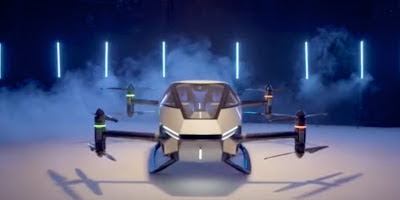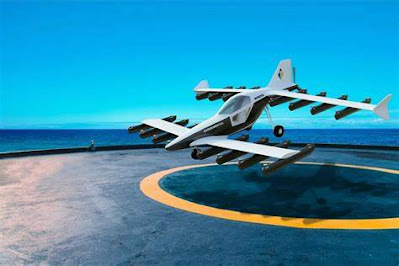Zapata VTOL Barrels Like Fighter Jet

Zapata Air Racer Source: Zapata Air Racer One of a Kind Personal Flying Machine French entrepreneur and jet ski racer Franky Zapata has created a 1-person VTOL flying machine that can handle barrel rolls like a fighter jet and is coming to the US for test flights this year. Known as Air Racer (aka Jet Racer), here are the key facts: VTOL (vertical takeoff & landing vehicle) has 1 seat, 10 jet engines, each with independent electric controls, and is designed for nearly autonomous flight Pilot inputs into flight controller system app what the destination is and the control panel determines the best route to get there Vehicle is so technologically advanced and agile, it can be programmed to perform barrel rolls like a fighter jet Pilot controls only direction and altitude and the flight control panel autonomously pilots the...







